29 Nov 2021
When the A330 Multi-Role Tanker Transport (MRTT) was introduced as the RSAF’s next-generation tanker aircraft back in 2018, there was a need for a new facility to house it.
Our engineers and the RSAF envisioned an all-in-one complex that could integrate the different workspaces required for its maintenance and operations. It would also be coupled with a seamless workflow design that would help improve work efficiency and reduce maintenance downtime.
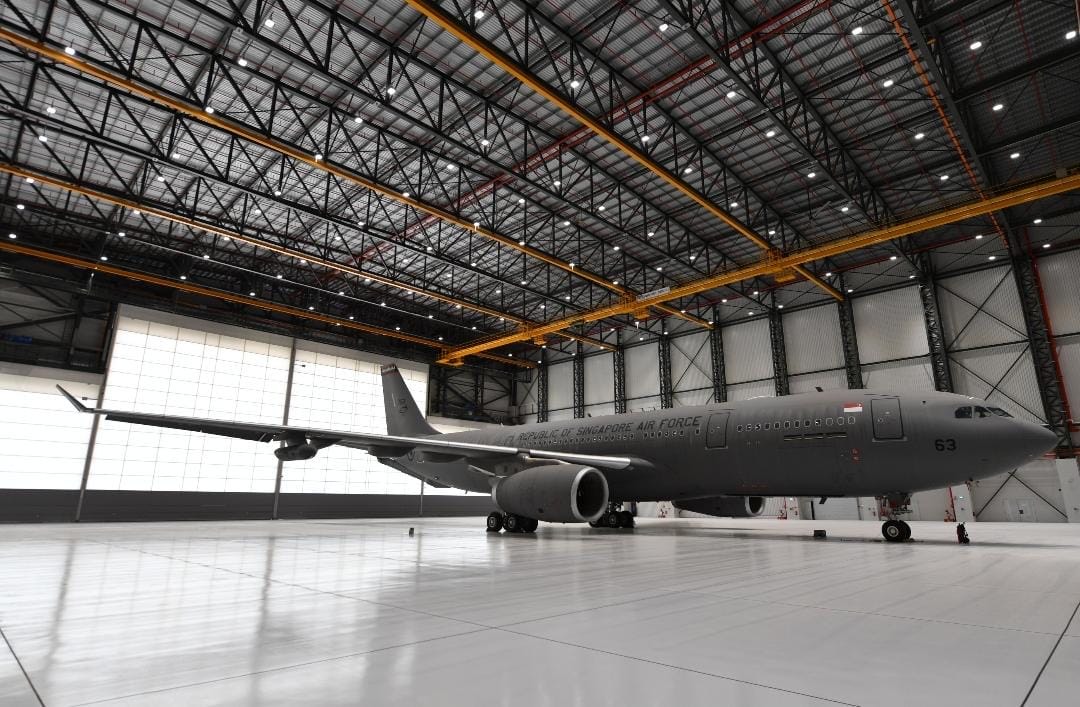
The A330 MRTT hangar was designed and developed by DSTA in close collaboration with the RSAF.
To achieve this, our engineers worked closely with the RSAF to define the detailed specifications required for their operational needs, following which they also led the design, development, and delivery of the hangar. This involved leveraging technologies such as Building Information Modelling (BIM) and virtual reality (VR) to help the RSAF envision how the hangar would look like and how it could be operated, even before construction began.
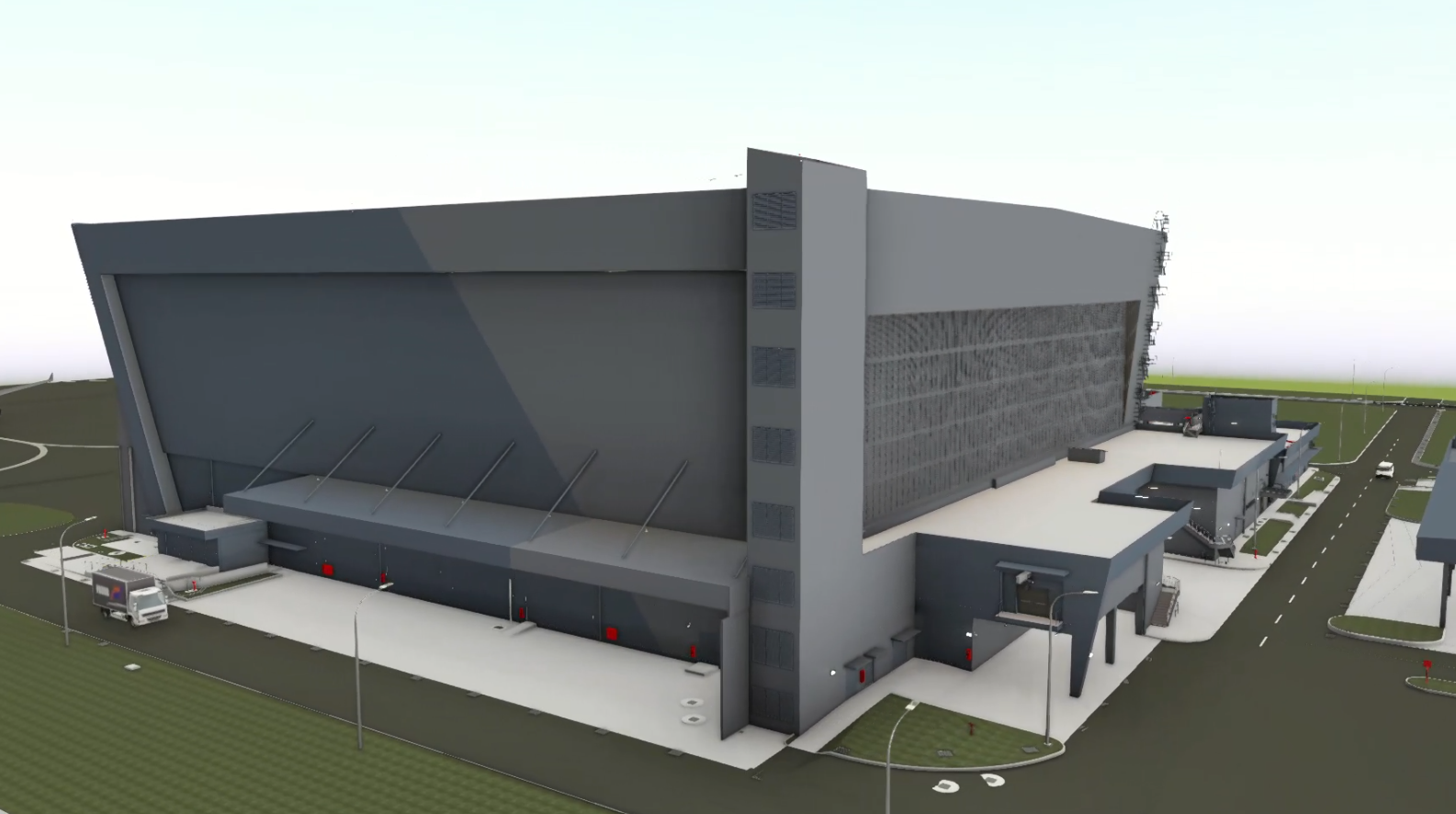
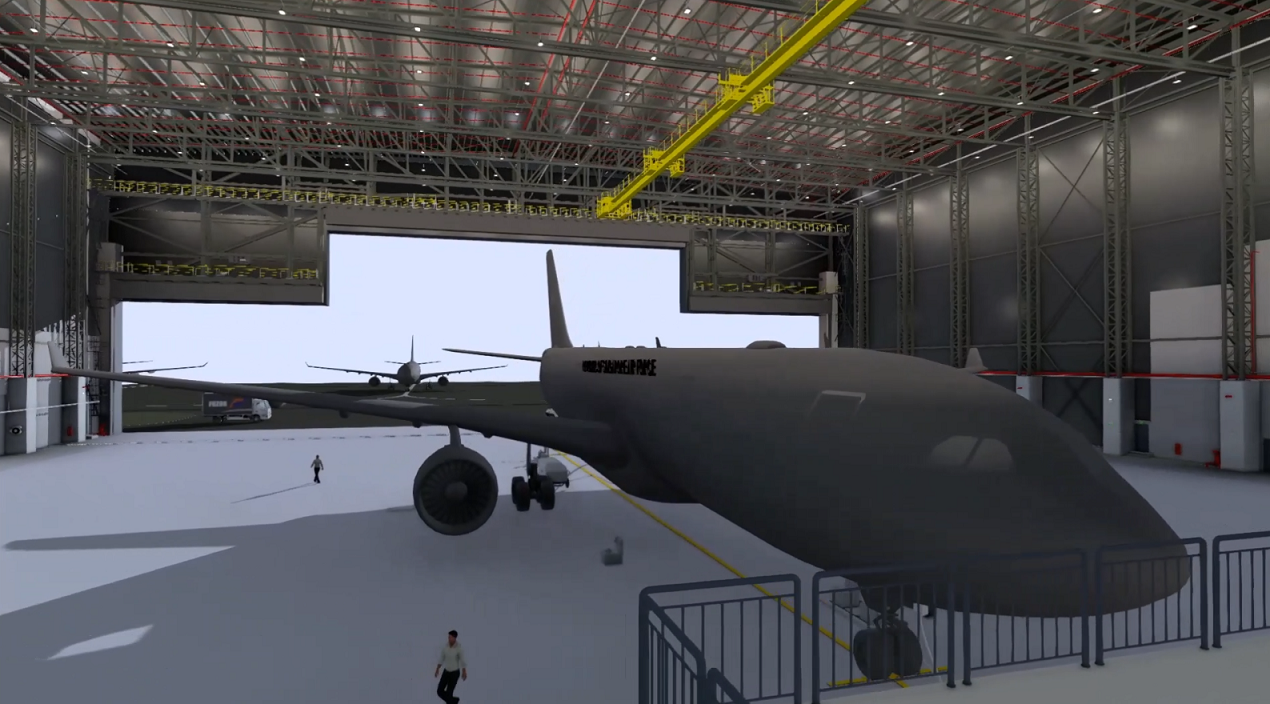
Conceptualised with the aid of BIM and VR, the hangar was envisioned as an all-in-one complex.
The team also took the design one step further by incorporating green features for environmentally sustainability. For instance, over 2,000 solar photovoltaics panels are installed on the hangar’s rooftop, which generate enough energy a year to power 273 4-room HDB households.
The hangar marked a major milestone for the SAF as its first Green Mark Platinum (Positive Energy) building certified by the Building and Construction Authority.
In recognition of their efforts in contributing to Singapore’s defence capabilities, the A330 MRTT hangar team was awarded the prestigious Defence Technology Prize (DTP) Team (Engineering) award this year.
Deputy Head (Building and Infrastructure) Jolene Chung, who was part of the team, shared her thoughts on the team’s journey. A mechanical engineer, she found her love for science, technology, engineering, and mathematics at an early age and has been with DSTA for almost five years.
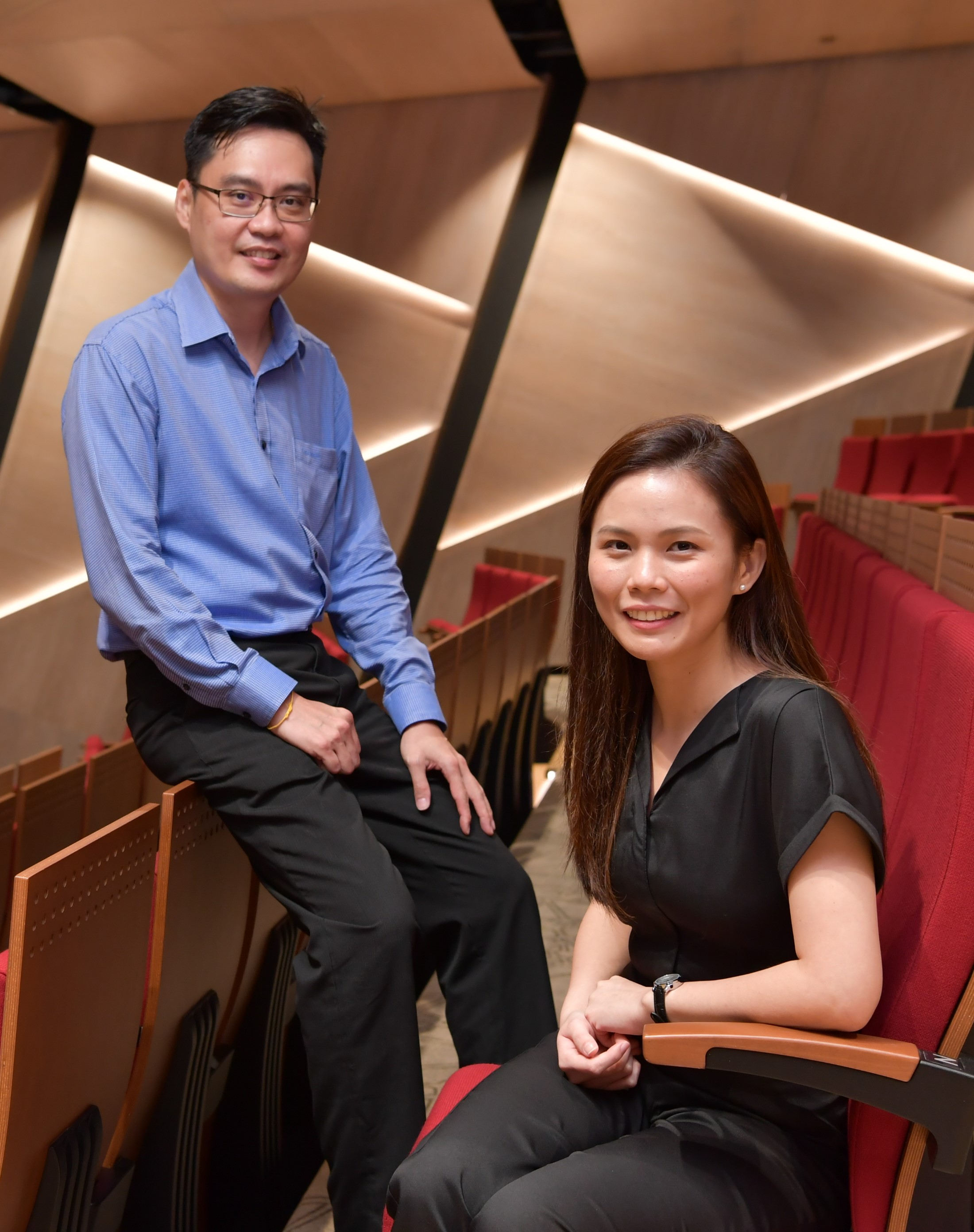
Senior Programme Manager Soh Tian Boon (left) and Jolene (right) were part of the DSTA team that led the hangar’s design and development.
What were some of the challenges that the team faced in designing and developing the hangar?
Visualising the end product without the help of a visualisation tool posed some challenges, so we leveraged computer modelling and simulation tools such as BIM and VR to envision how the hangar would look like and could be operated. By giving our RSAF partners an immersive experience upfront, we were able to minimise the need for reworks while ensuring operational requirements would be met.
What kept you going despite the challenges?
I think challenges are just part and parcel of any project – they keep us thinking, drive the momentum, and make us push boundaries to achieve greater heights. In many ways, they are learning opportunities for personal and professional growth.
My teammates were crucial in this learning journey that we embarked on together. Their encouragement, support and the knowledge that we were in it together brought out the best in us.
What about this project excited you?
It was thrilling to be involved in iterative design sessions and meetings with my teammates. I enjoyed all the times we cracked our brains jointly and resolved technical challenges.
Just as exciting was the opportunity to go beyond operational requirements to achieve sustainability targets together. Achieving those targets was not an easy feat – we had to have multiple sessions with industry partners, the relevant authorities, and our core team to validate our ideas, and achieve an optimal and balanced solution that met operational needs as well.
Knowing that I’ve contributed to the hangar’s development and delivery gives me a strong sense of accomplishment.
What would you say to aspiring engineers who want to be in defence tech?
If you enjoy solving problems that add value or contribute to national defence and are keen to work with advanced tech, take the bold step and join the defence tech community!
For the ladies, don’t shy away just because of the perception that this is a male-dominated field. There are many outstanding ladies working in defence tech, and we bring diversity in viewpoints and perspectives to the engineering world of hard logic.
What brought you to the field of defence tech?
My love for physics, mathematics and their applications led me to explore defence tech, but the nature of defence tech is what keeps me here. More often than not, we’re required to think out of the box, improvise, tailor solutions, and strike a good balance without compromising operational requirements. Not only is it challenging, it is also especially meaningful because our work contributes directly to our national defence and security.
Our work is hardly ever boring, because we are constantly learning! Moving forward, I definitely see myself broadening my horizons and working more on sustainable developments for the SAF.
Lastly, what are your thoughts on your team winning the DTP?
When we first started out on this project, the notion of winning the DTP was the furthest from everyone’s minds. We were merely looking to deliver a facility that could meet the RSAF’s unique requirements, and one that could be integrated with a variety of green technologies to achieve high energy performing building standards.
I feel very honoured that my team’s efforts and hard work have been recognised. Seeing the completed hangar for the first time was definitely a rewarding moment. And looking back, I’ve bagged many learning points from the people I’ve worked with, be it my teammates, or our partners from the RSAF and the industry.
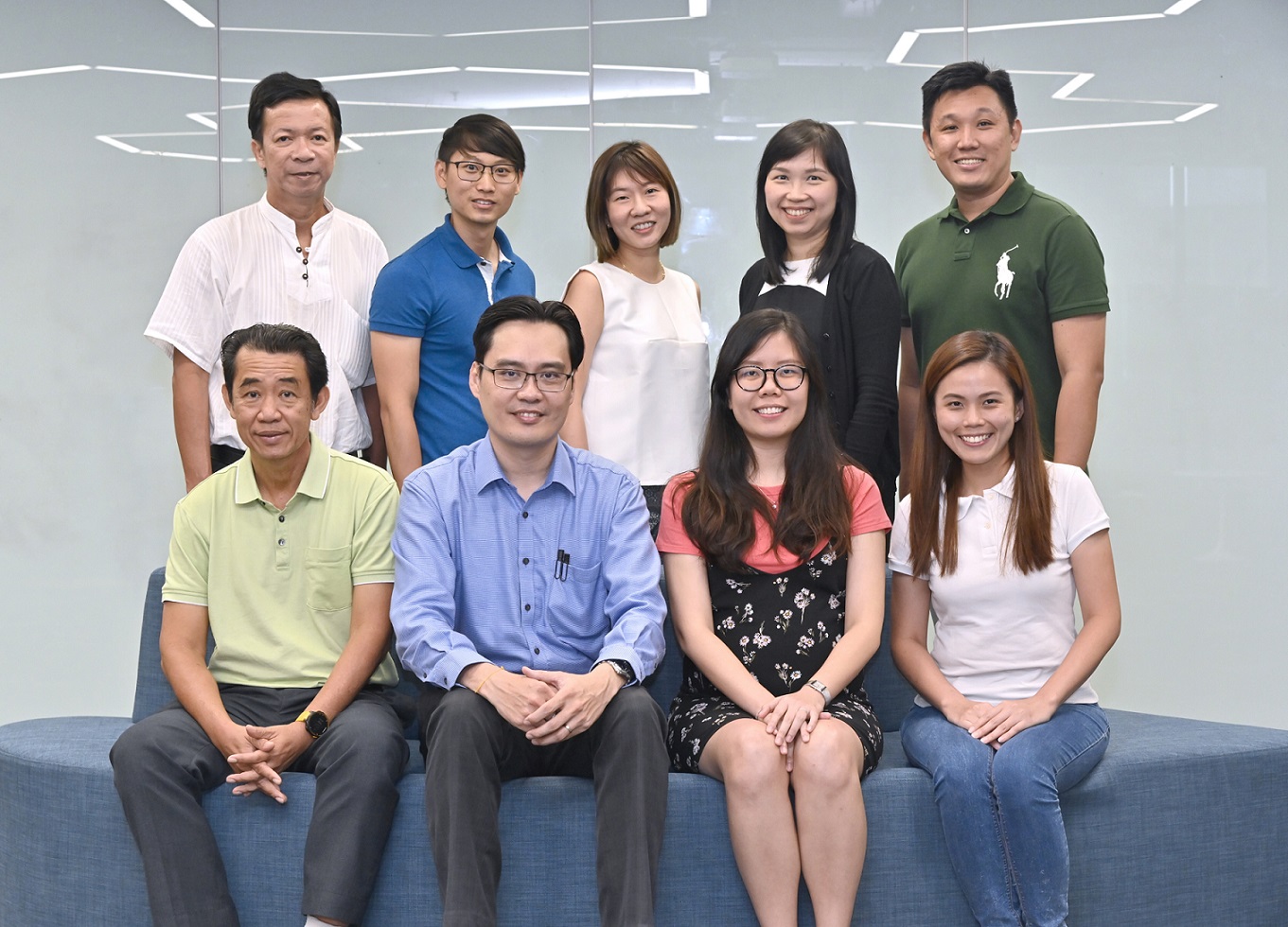
Congratulations to the multidisciplinary DSTA team whose work on the A330 MRTT hangar netted the DTP 2021 Team (Engineering) Award.
